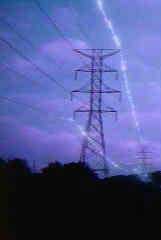Utility Watch
June 1, 2001
 How
to Save Energy Tips How
to Save Energy Tips
With energy prices climbing across the country, Californians are
not the only ones who could be saving money and fuel by observing
a few energy-saving tips.
Whatever we conserve represents money saved and resources spared.
Sometimes an improvement will cost initiallybut the expense will
pay for itself in increased efficiency.
 HEATING
AND COOLING HEATING
AND COOLING
Keeping your home a comfortable indoor temperature is probably
your largest energy expenditure. Reduce the amount spent without
investment or lifestyle changes simply by closing the doors and
turning off heating or cooling vents in unused rooms.
Weatherizing and insulating your home will help reduce energy bills.
Use caulk to plug leaks along windows and apply weather stripping
in doorways. A quarter-inch gap at the bottom of a typical
door is equal to a three-inch square hole in the wall!
Keep heating and cooling equipment in good condition, replacing
or cleaning air filters frequently. If you have an air conditioner
outside in direct sunlight, erect a shade over itjust be sure not
to block the air intakes.
If you do not have air conditioning or would like to reduce your
dependence on it, consider a ceiling fan. They are cheap,
easy to install and go a long way toward circulating the air on
a hot day.
Limit your use of appliances that throw off heat for cooler times
of the day. When practical, run the dishwasher, washing machine
and dryer at night. Cook outside instead of using the stove
or oven. When cooking inside, remember that microwaves use
less energy and give off less heat.
Set the air conditioner temperature a degree or two higher.
For each degree you raise it, you can reduce your cooling bills
by 3 percent.
Outside vegetation keeps homes cool inside. Plant trees around
your home for shade and bushes close to the house. It takes
years for a tree to grow enough to provide shade, but planting climbing
vine on the sunny sides of a house will also help lessen the suns
radiation.
Carefully insulating and sealing leaky ducts throughout the house
can lower the amount you spend on cooling or heating by almost half.
HOT WATER
Use less hot water by installing low-flow showerheads. This
can cut hot water requirements by as much as 50 percent, saving
14,000 gallons of hot water a year for a family of four. Insulate
hot water pipes and hot water heater with a jacket that costs less
than $20 at home supply stores.
 LIGHTS LIGHTS
Turn off lights that are not in use. Switch to florescent
light bulbs. They cost a little more but use 75 percent less
energy than incandescent bulbs and last for thousands of hours.
REFRIGERATORS
Refrigerators, like most appliances, work most efficiently when
well maintained. Manual refrigerators use less energy than
frost-free models. Temperatures should be kept within the
37-40-degree range. Freezers should be set around 10 degrees
if used to store meat. If not, freezers may be set around
25 degrees.
Refrigerators work best when they are full, but not overcrowded.
Where the refrigerator is situated makes a big difference too.
Locate the refrigerator away from the stove, out of the sunlight
and away from heating ducts. Periodically move the appliance
away from the wall and vacuum coils to improve efficiency.
Try not to let the frost build up the freezerdefrost when the
frost becomes a quarter-inch thick.
Close the refrigerator door quickly, especially in humid weather.

Look around your home, assess your needs versus your habits and
you could start saving money by the time that next electricity bill
hits the mailbox. There are multiple opportunities around
your home to start saving energy.

|

